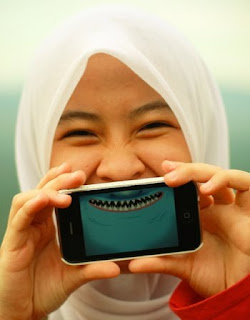It is fascinating that this comes at the same moment the Supreme Court has ruled that corporations enjoy the same rights as other citizens. In effect, declaring them legal human avatars. Why does this matter? Because it signifies that as a society we are granting civil rights, as it were, to corporate entities. Simultaneously, corporate marketers are realizing that in order to better interact (and eventually increase sales) through social media or other channels, previously remote and disdainful entities must now show a little humility in order to close the deal. Talk about your converging paradigms... JL
EB Boyd reports in Fast Company:
Want to build your brand? Traditionally that’s meant a lot of chest thumping. But that’s changing, IDEO communications designer Elle Luna told a standing-room-only crowd at The Designer Fund’s first-ever Designer Fair on Friday. More and more, brands are gaining traction by embracing qualities like honesty, kindness, and simply having a sense of humor about themselves. It's something a lot of viewers of ads by Domino's, Old Spice, or Dos Equis may have noticed, but Luna summed it up succinctly.
“Today, brands are becoming more and more like humans,” Luna said. “They’re taking on more and more human-like traits.”
About 200 people crammed into 500 Startups’ incubator space in downtown Mountain View, Calif., for the inaugural Fair, a lightweight, late afternoon “conference” of sorts, where designers networked with hackers, and listened to several dozen presentations from the likes of Pinterest’s Evan Sharp, Eventbrite designer Tom Censani, former Mint.com lead designer and now Votizen cofounder Jason Putorti, and Visual.ly’s Nate Whitson.
The Fair was part of The Designer Fund’s overall goal to put designers at the center of the current tech boom and ultimately encourage some of them to start their own companies.
Luna’s talk on the increasing humanity of brands included examples from Pepsi, which decided to launch the Refresh Project last year, a charitable giving program, instead of dropping $20 million on a Super Bowl ad, and Patagonia, which uses the “Footprint Chronicles” section of its website to let consumers see the environmental impact of the company’s various garments.
Some brands might shy away from releasing the kind of information that Patagonia’s putting out there about their goods for fear of airing their (environmental) dirty laundry in public. But that would be missing the point, Luna said.
“The notable thing about what Patagonia is doing here is they’re not saying, ‘Hey look, we’re great.’ They’re saying, ‘Hey look, here’s where we are, and here’s what we’d like to be doing better,’” Luna said. “In their willingness to show the less desirable parts of their brand, they were making a much bigger win with consumers. They were coming across as seeming honest.”
“We are hard-wired to respond to [human] traits,” Luna continued. So, “if you’re doing good, [think about] how do you communicate that to your users, especially in a human way, through traits like honesty, openness, and humor? If you have practices that you’d like to improve upon, that you’re working on, [think about] how might you be honest and open with your users, even when it’s not all perfect.”




















0 comments:
Post a Comment